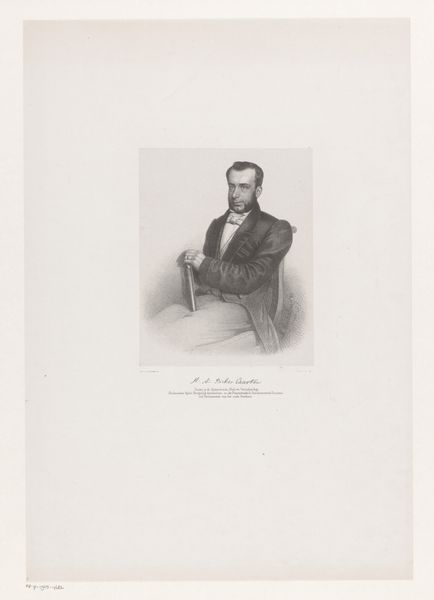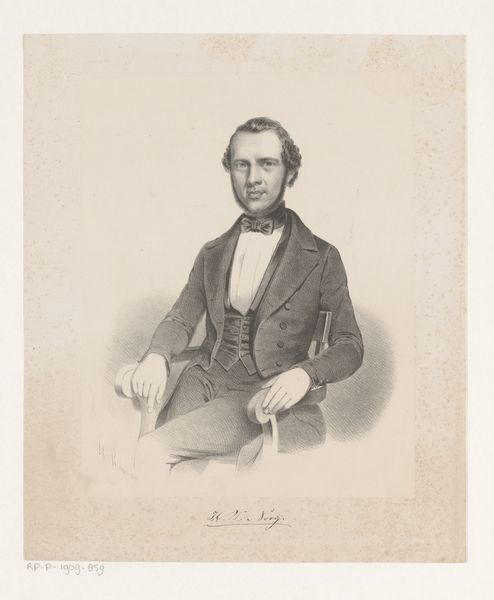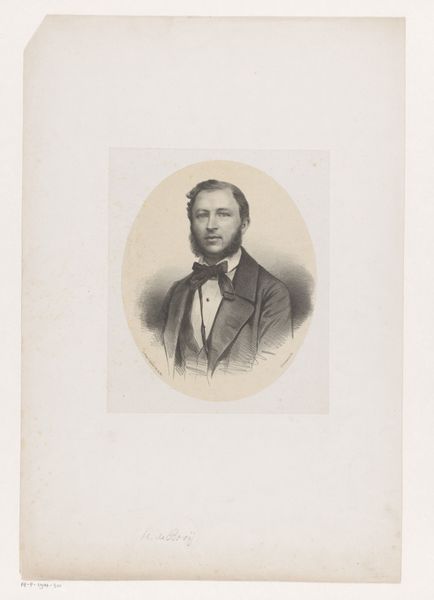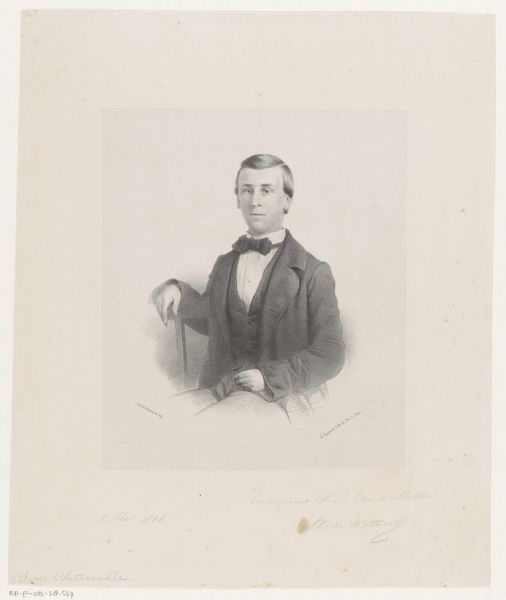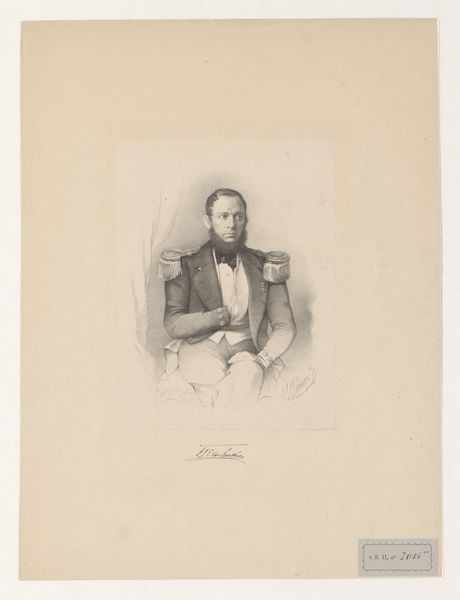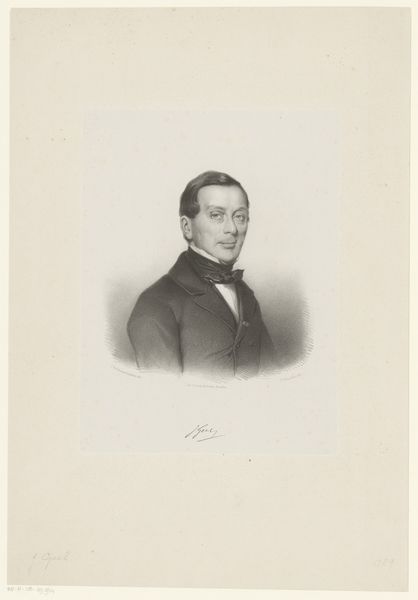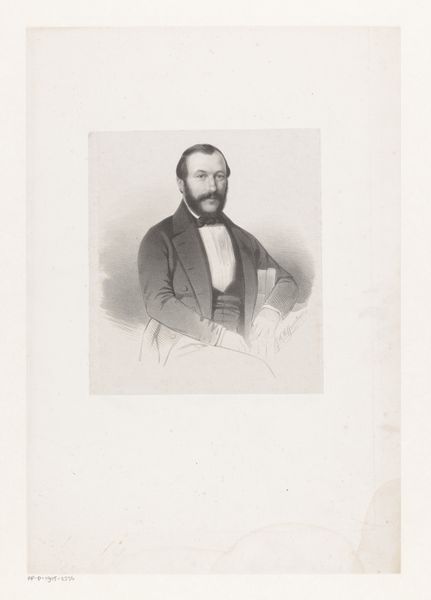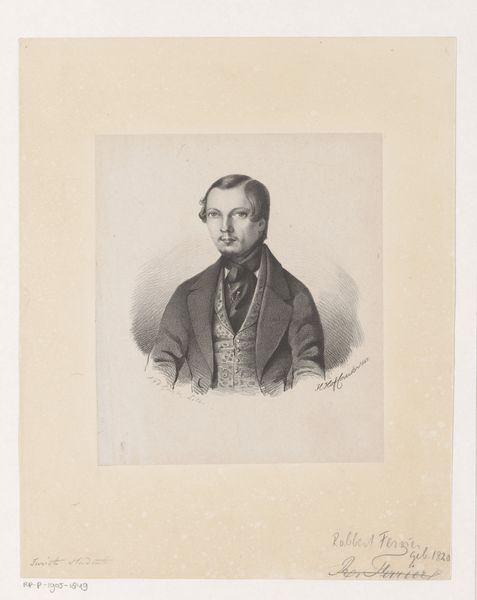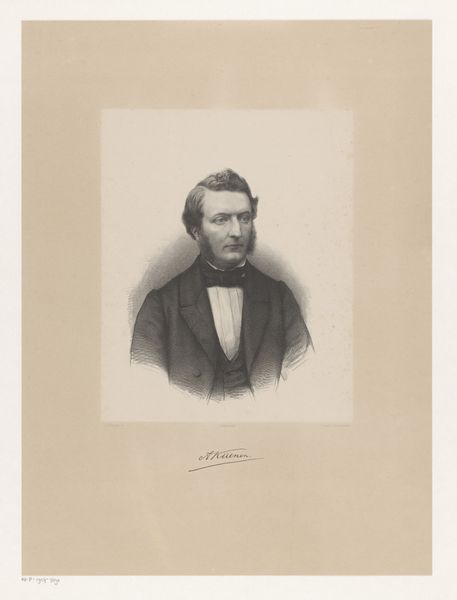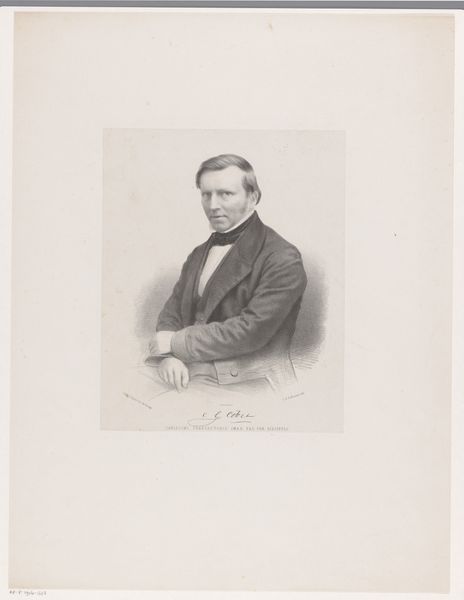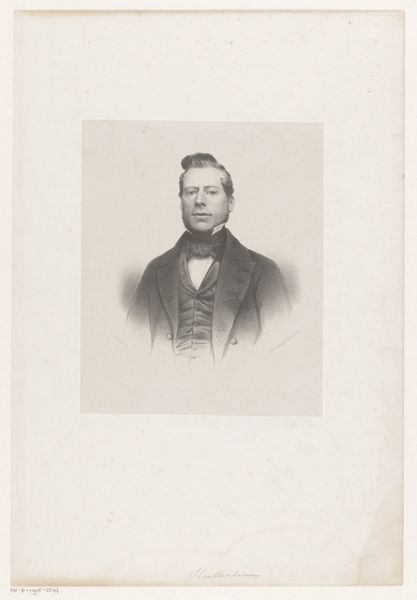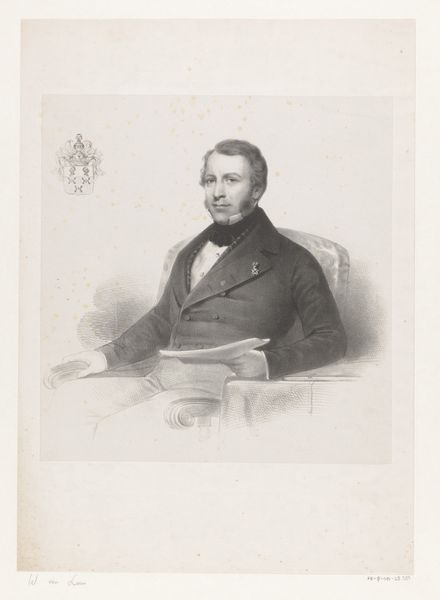
print, engraving
#
portrait
#
16_19th-century
# print
#
archive photography
#
historical photography
#
history-painting
#
engraving
#
realism
Dimensions: height 524 mm, width 355 mm
Copyright: Rijks Museum: Open Domain
Editor: Here we have Jacobus Hermanus Otterbeek's "Portret van J.M. (Jacobus Marinus) van Gent," created between 1849 and 1863. It's an engraving, a printed portrait. It strikes me as incredibly formal; the sitter looks rather serious. What do you see in this piece, considering the formalist perspective? Curator: Formally, the piece presents a fascinating study in contrasts and textures achieved through engraving. Note the meticulous rendering of the sitter's garments—the play of light on the velvet collar, juxtaposed with the linear precision of the vest. What effect do you think this sharp contrast has on the viewer? Editor: I suppose it draws attention to those specific textures, highlighting the sitter's status and wealth. Is there more to glean just by looking closely at technique? Curator: Absolutely. Consider the artist's management of light and shadow—the strategic deployment of hatching and cross-hatching. Observe how this distribution models the form, creating a sense of depth and volume. The tonal gradations are crucial in conveying the subject's character. This contributes significantly to the work's aesthetic impact, wouldn't you agree? Editor: Definitely, especially how the darker tones emphasize the sitter's stern expression. It seems that everything, even the sitter’s clothes, serves the goal of conveying realism through stark contrasts and fine lines. Thanks, I've certainly gained a deeper understanding! Curator: My pleasure! By analyzing the intrinsic visual elements of the piece, the texture and tone, we’ve moved past the simple identification to appreciating how meaning is built within the piece itself.
Comments
No comments
Be the first to comment and join the conversation on the ultimate creative platform.
